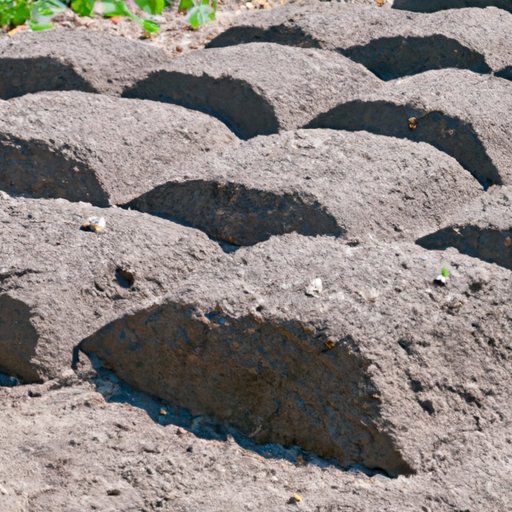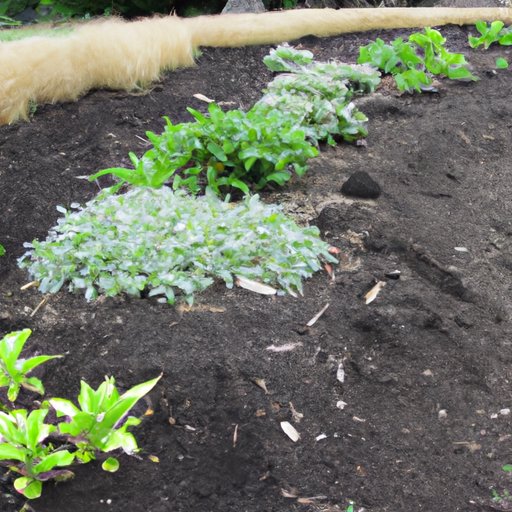Introduction
Berms are common features of many gardens and landscapes, but what exactly are they and why are they important? Essentially, a berm is a raised mound of soil that can be used to add elevation and visual interest to a flat or boring garden. But beyond their aesthetic appeal, berms can also play an important role in preventing soil erosion, capturing water runoff, and promoting sustainable landscaping practices. In this article, we’ll explore everything you need to know about berms, from their basic definition to tips on how to design and build your own.
Defining Berm: Understanding Its Importance in Landscaping
Before we dive into the nitty-gritty of building berms, let’s first define what they are and why they are useful in landscaping. Unlike mounds or hills, which typically have steep or irregular slopes, berms are more gently sloping and can be used for a variety of purposes. Some of the most common reasons for building a berm include:
- Adding height or elevation to a flat yard, creating new sightlines or vantage points
- Creating visual interest in a monotone or unremarkable landscape
- Softening harsh lines or edges in a landscape design
- Providing a buffer or visual screen between different parts of a garden
Berms can be used in a variety of garden styles, from formal and manicured to wild and naturalistic. For example, you might use a berm to add texture and dimension to a formal garden with pruned hedges and topiaries, or to create a meandering, naturalistic garden with winding paths and pollinator-friendly plants.
The Purpose of Berms: How They Can Enhance the Appearance of Your Garden
While berms may be useful as a tool for adding height to your garden or providing a buffer between different parts of your landscape, they can also be an essential part of good garden design. By choosing the right plants and materials to build your berm, you can create a beautiful and functional garden feature that adds depth, texture, and interest to your yard.
Here are a few ways that berms can enhance the appearance of your garden:
- Adding texture: Berms can be planted with a variety of plants, such as tall grasses or shrubs, to create a multi-dimensional look and feel.
- Adding color: By selecting brightly colored flowers or foliage, you can make your berm a standout feature of your garden.
- Creating a focal point: If you build your berm in a prominent location, it can serve as a visual anchor for your garden, drawing the eye and providing a sense of balance.
- Softening lines: Berms can be used to provide more organic, flowing lines to your garden design, breaking up harsh lines or straight edges.
Ultimately, the purpose of a berm is to add interest and dimension to your garden, while also providing a functional tool for addressing issues like soil erosion, water runoff, and landscaping challenges.

Transforming Your Garden with Berms: A Complete Guide for Beginners
If you’re interested in building a berm in your garden, here’s a step-by-step guide to help you get started:
Plan and Design Your Berm
The first step in building a berm is to decide where you want it to go and what purpose it will serve. Consider factors like sun exposure, neighboring plants or structures, and the overall design and flow of your garden. Once you have a general idea of where you want to put your berm, mark the area with spray paint or stakes and string.
Prepare the Site
Before you start building your berm, you’ll want to prepare the site by removing any existing turf or vegetation and digging out the area where the berm will go. This is also a good time to check for proper drainage and amend the soil as needed for optimal plant growth.
Build Your Berm
Using soil and material, build up the berm into the desired height and shape. Be sure to tamp down the soil periodically to ensure that it is stable and secure, and provide gentle slope to the surface.
Select and Plant Your Plants
After your berm has been built, select plants that are suited to the conditions of your site. Consider factors like light levels, soil type and moisture, and the overall theme and feel of your garden. Choose taller plants for the top of the berm and shorter, more ground-hugging plants for the slopes. Finally, add mulch to hold moisture and prevent topsoil erosion.
Maintain Your Berm
To keep your berm looking its best, be sure to provide regular care and maintenance. This might include watering during dry spells, fertilizing occasionally, and pruning or deadheading plants as needed.
The Environmental Benefits of Building Berms on Your Property
While berms are often thought of as purely aesthetic features of a garden, they can also play an important role in promoting sustainability and protecting the environment. Here are a few key benefits of building berms on your property:
- Reduced soil erosion: By creating a raised surface with a gentler slope, berms can help prevent soil erosion on sloping terrain.
- Water capture: Berms can also help capture rainwater and prevent runoff, which can help prevent erosion and protect nearby water sources.
- Natural filtration: As water seeps through the soil of a berm, it can help filter out pollutants and sediment, improving water quality and protecting nearby ecosystems.
Overall, building a berm can be a great way to promote environmental stewardship and enhance the beauty and functionality of your garden.
Building Berms: Tips on Choosing the Right Materials and Plants
When it comes to building a berm, there are a few key factors to consider to ensure that your berm is both attractive and functional:
Materials
The soil type and materials you choose for your berm can have a big impact on its success. In general, you’ll want to choose a soil mixture that is well-draining and nutrient-rich, with plenty of organic matter to support plant growth. Look for a mix formulated specifically for gardens and landscaping, rather than relying solely on fill dirt or native soil.
Plants
Choosing the right plants for your berm can also be critical to its success. Consider the following factors when selecting plants for your berm:
- Sun exposure: Choose plants that are suited to the amount of sun your berm receives each day.
- Water requirements: Make sure your chosen plants are appropriate for the amount of water your berm will receive.
- Soil type: Some plants prefer well-drained soils, while others perform better in heavier or more clay-like soils.
- Visual appeal: Select plants that complement the overall design and aesthetic of your garden.
The Versatility of Berms: Creative Ideas for Incorporating Them into Your Outdoor Space
While berms are often used to add height, depth, and texture to a garden, they can also be used in a variety of other ways. Here are a few creative ideas for incorporating berms into your outdoor space:
- Create an outdoor room: By building a berm around a seating area or outdoor dining space, you can create a sense of enclosure and privacy in your garden.
- Disguise an unsightly feature: Berms can be used to soften the look of utility boxes, retaining walls, or other unattractive features in your landscape.
- Add seating or play areas: By building a berm with gentle slopes, you can create a play area or seating area that is both functional and visually appealing.
Whether you use a berm to create a cozy outdoor nook or as a way to add color and texture to your garden, the possibilities are virtually endless.
How Berms Can Prevent Soil Erosion and Promote Sustainable Landscaping
At their core, berms are all about building healthy and sustainable landscapes that support biodiversity and protect natural resources.
By using berms to prevent soil erosion, capture water runoff, and promote natural filtration, you can help ensure that your garden is both beautiful and environmentally responsible. So why not consider building a berm in your garden today?
Conclusion
Berms are versatile, attractive, and environmentally friendly garden features that can add height, depth, and texture to your outdoor space. Whether you’re a beginner or an experienced gardener, building a berm can be a fun and rewarding project that helps enhance the appearance of your garden while supporting ecological sustainability. So why not give it a try?
Remember that proper planning, soil preparation, and plant selection are key to building a successful berm, and don’t hesitate to seek out professional advice if you’re unsure about any aspect of the process. With a bit of patience and effort, you can transform your garden into a beautiful and sustainable outdoor oasis that you can enjoy for years to come.
